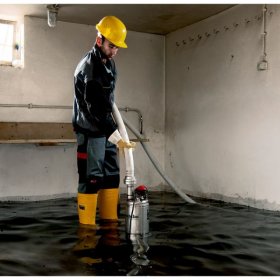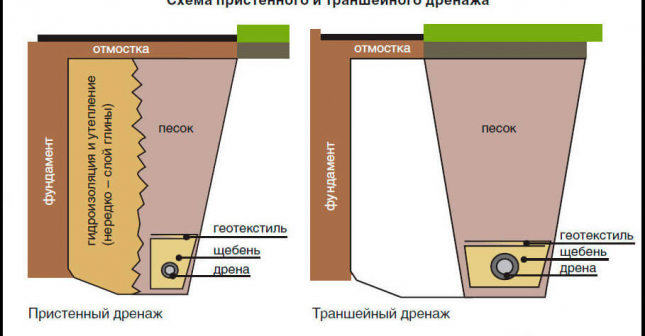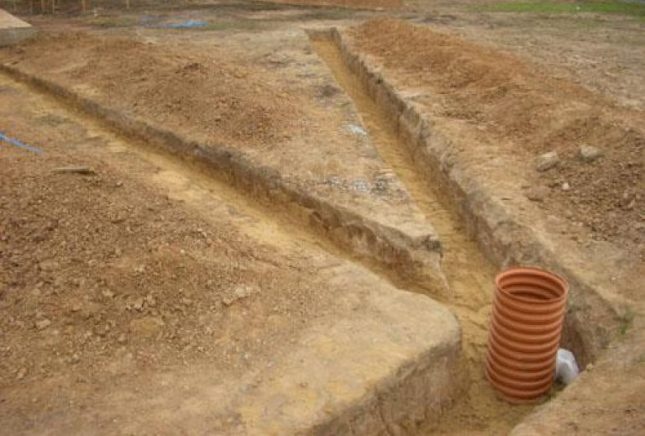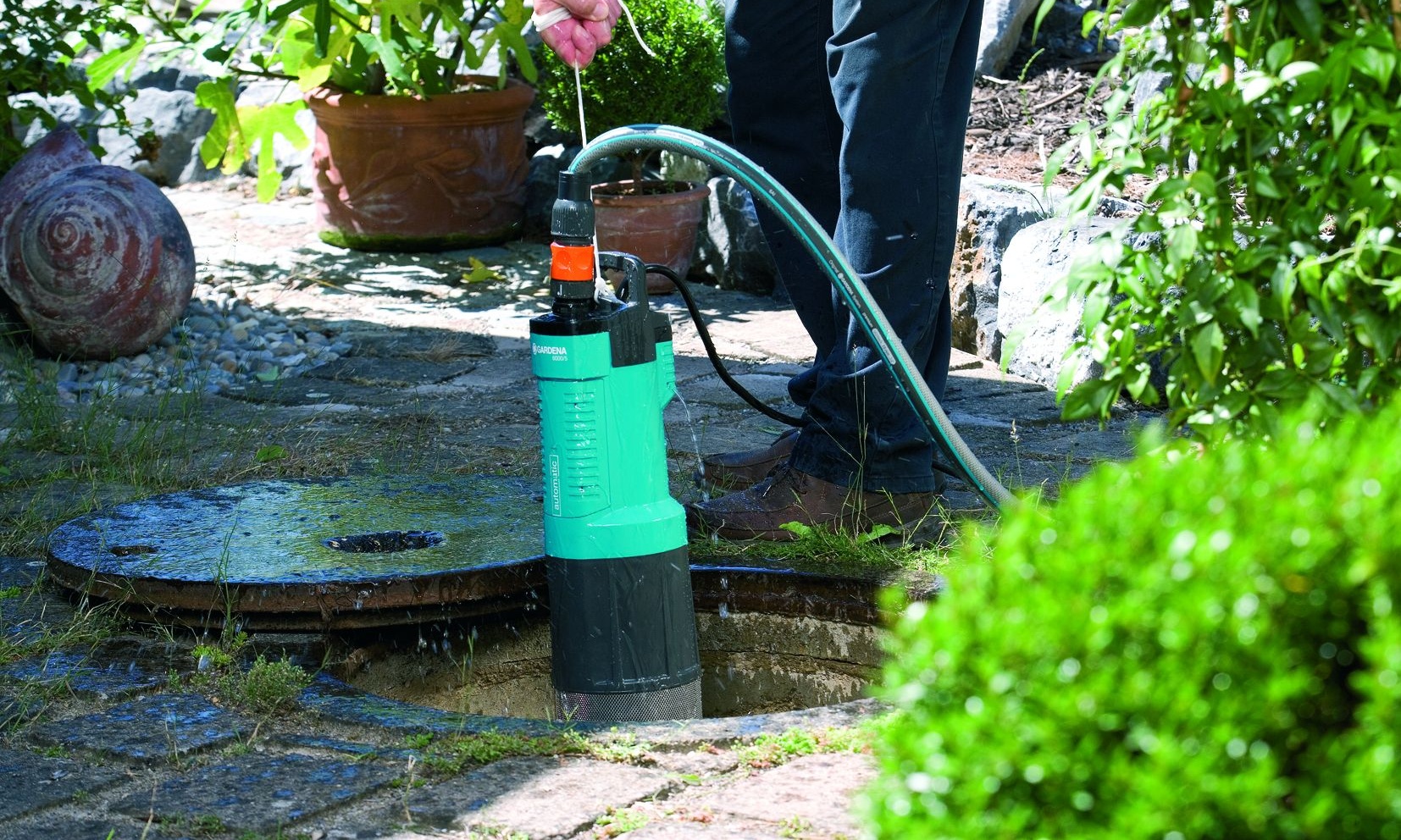What to do if there is groundwater in the basement of a private house

They survived the harsh winter and waited for warm spring days, the flood began. The joy of many owners of private houses during snow melt is overshadowed by the presence of water in the cellar or basement. This problem is repeated in many regions of our country every spring, it can lead to unpleasant consequences for the health of residents, creates the risk of destruction of the foundation, basement and the house as a whole. We will analyze in detail the causes of water in the basement and ways to solve this trouble.
The reasons for the appearance of water in the basement

If you do not take measures to protect the basement from groundwater during construction, then eliminating the consequences of flooding will become a more costly solution
The first aquifer is formed in the upper layers of the soil. Moisture from atmospheric precipitation and melted snow and ice cover and nearby water bodies gets into it. In the spring of moisture in excess, the groundwater level above two meters deep is considered high.
On the way of water penetration into the house, the owners erect two main obstacles:
- waterproofing the foundation, floor and walls of the basement, basement, which protects the thickness of the concrete and brick layer from the gradual leakage of water through microcracks and pores of the material;
- a drainage system under the foundation, around the basement or the entire house, which collects most of the moisture and takes it outside the inner zone.
The causes of flooding are most often:
- violation of the technology of arranging external waterproofing at home;
- clogging, siltation of drainage pipes or the volume of drains exceeding the capabilities of the system;
- breakthrough of water supply or sanitation pipes;
- heavy condensation due to poor basement ventilation.
Some frugal owners build a building without drainage at all, believing that waterproofing will be enough. Often, after several years, water suddenly appears in a dry cellar - this moisture has made its way into the smallest damage to hydrophobic protection. Calcium carbonate in concrete gradually dissolves, which leads to the loss of the bearing capacity of the walls, mold and fungus grow. Lack of drainage also harms the garden - the root system of fruit trees is eroded, the soil is swamped.
It is possible to determine the high level of groundwater occurrence in the area even before the construction of the house with the help of geological examination, or according to popular signs: a high level of water in the well in nearby areas and the presence of plants such as reeds, willow, alder, and horsetail.
What to do if groundwater appears in the basement
If the house has already been built and flooding is found in the basement, then urgent measures must be taken to pump out, timely remove the incoming moisture and prevent further leakage.
Methods for pumping water:
- a vibration (submersible) pump is inexpensive and works efficiently with small volumes of relatively clean water without large debris;
- You can buy a drainage pump yourself or call an emergency team that will do the job professionally and quickly with powerful equipment.
Pumps are divided into submersible and external. The external pump is lowered into the water only by the lower part, and the submersible pump is completely.
The technology of work on self-removal of a flood by a drainage pump:
- Connect a flexible hose for further discharge outside the house.
- Take a large plastic bucket, drill holes in it, wrap it with a piece of geotextile and place the pump in an impromptu drive. If the water is high, then the entire system with a submersible pump is simply lowered into the water and put on the floor. For the external pump, pour gravel into the accumulator to the required level so that the lower part is immersed and the upper part remains in the air. Using a float, the pump determines the water level and switches off after pumping.
To prevent re-flooding after a single pumping, if the water still arrives slowly, you can make a quick drain, the so-called pit, and create an automatic system that will keep the basement dry until the groundwater level drops.
Sequencing:
- Dig a hole in the middle or at the lowest point in the basement with a volume of approximately 1 m³. So that the wet walls do not collapse, densely tamp them and lay them out with bricks, fill the bottom with gravel.
- Install a pump with automatic equipment in the pit, connect it to the drain hose. Water will accumulate in the recess and be pumped out immediately, and the floor in the basement will be dry.
To meet the next season of flooding fully equipped, you need to equip the internal and external waterproofing, make a ring drainage.
To create high-quality internal waterproofing, you will need the following tools and materials:
- composition for penetrating impregnation, bituminous mastic, cement, reinforcing mesh, sand;
- container for mixing concrete, drill with nozzle mixer, spatula and brush.
Operating procedure:
- Dry the room, clean it of dirt, plaster cracks and crevices.
- To process the floor and walls with a penetrating composition, it will clog all the microchannels and strengthen the concrete layer, create a waterproof structure.
- The second layer of waterproofing is bitumen mastic. It should lie evenly with a thickness of at least 2 cm.
- Plaster the walls with reinforcing mesh, pour the screed with metal reinforcement on the floor. Wait until it solidifies and dries.
For external waterproofing of the already built house, you will have to dig out the foundation, as far as possible, and coat it with bituminous mastic or wrap it with rolled waterproofing materials 30 cm above the surface level, and then fill the soil back and compact it. Additionally, it is possible to equip a drainage membrane with geotextiles.

Drena - underground artificial watercourse (pipe, cavity) for collecting and draining soil and groundwater
Simultaneously with external waterproofing, it is advisable to make an annular trench drainage, which is placed 50 cm below the level of the basement heel.
Stages of construction:
- Around the house, at a distance of 1-3 m from the walls, you need to dig a trench. Bends of 4–5 m should be dug from each side of it, a sufficient slope towards the prefabricated collector should be created, inspection wells should be made at the corners.
- Fill a layer of crushed stone, line the bottom of the trench with geotextiles to protect the drain from siltation. A perforated pipe is laid from above, into the holes of which water will collect and drain into the collector well. Again, top with rubble and cover with geotextiles. Get a pillow and a winding.
- Pour crushed stone and sand to the surface level, make a clay castle, lay the turf or make a blind area.
Drainage will take on the main blow of the flood, and high-quality waterproofing will protect against water seeping through the pores of concrete, from dampness and flooding of the basement. Then, even in the rainy spring, the basement of your house will be dry.








